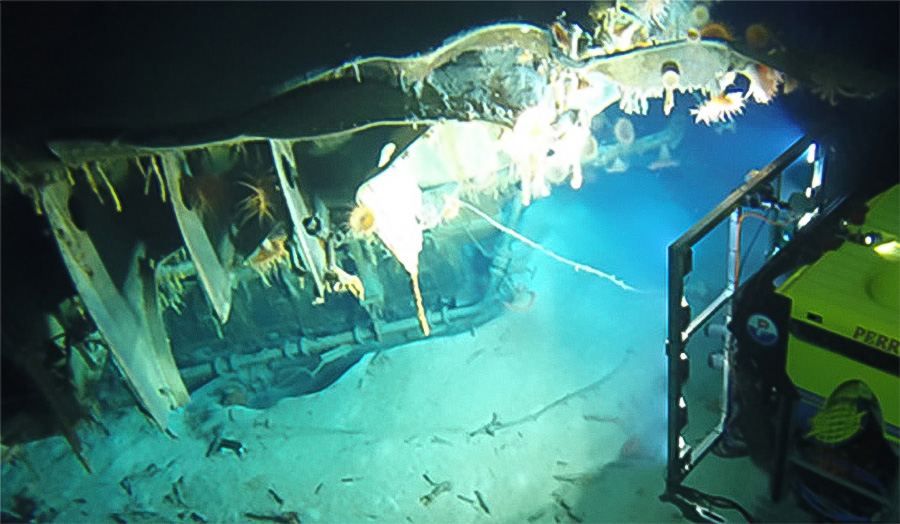
The goal of this project was to establish a comprehensive library of images documenting the wrecks of two historically significant ships: the HMAS Sydney II and the HSK Kormoran. These images were intended to support the creation of multi-platform museum exhibitions, preserving the unique heritage value of these vessels for future generations and honoring the lives lost in what remains Australia’s greatest naval tragedy.
The project involved the use of two remotely operated vehicles (ROVs) to survey the wrecks of both ships. The operation was led by Dr. Andrew Woods, Research Engineer at the Centre for Marine Science & Technology at Curtin University.
The Sydney and the Kormoran were both destroyed in battle on 19 November 1941 off the coast of Western Australia. For many years, the fate of the Sydney and its 645 crew members remained a mystery, until both wrecks were discovered in 2008. While photographs taken during the discovery helped locate the ships, they did not reveal how the Sydney had been so extensively disabled. Therefore, further surveys of the wrecks were essential to uncover the precise damage sustained and to determine which areas of the vessel were most severely affected.
Strategy
The strategy involved equipping each of the two ROVs with a suite of advanced imaging equipment, including ten LED-V-20K lamps. These lamps, capable of emitting up to 20,000 lumens each, were used to illuminate the wreckage during filming. The ROVs were also fitted with a Surveyor-HD-Pro camera and a 3D-HD camera system, working together as a complete imaging suite.
The Surveyor-HD-Pro is a state-of-the-art high-definition camera, capable of capturing full 1080p video at 50/60 frames per second. It features a water-corrected fused quartz hemisphere window and a titanium housing rated to 6,000 meters. The 3D-HD camera is a stereoscopic high-definition camera, also rated to 6,000 meters depth, offering invaluable 3D imaging. This technology is especially useful for ROV operations, as it provides depth perception, which allows operators to conduct complex tasks more quickly and safely. In marine archaeology, 3D imaging is crucial for providing spatial awareness, a level of depth perception that traditional 2D imagery cannot offer.
Surveying the historical World War II shipwreck of HMAS Sydney (II) and the German raider HSK Kormoran -Part 1
Solution and Results
Teledyne Bowtech supplied the complete imaging suite, and the results were outstanding. Dr. Andrew Woods, who led the operation, reported that the lights performed exceptionally well, producing rich colors and stunning lighting effects. He also praised the Surveyor-HD-Pro camera for operating flawlessly, capturing incredible footage. Reflecting on the expedition, Dr. Woods described it as "a raging success," thanks in large part to favorable weather, reliable equipment, and meticulous planning.
“We met all of our objectives, including several stretch goals. There have been comments that we’ve set a new benchmark in maritime archaeology, which was exactly our aim,” he said.
The research team now faces the task of reviewing the vast amount of data collected during the week-long survey. This includes 50 terabytes of data, approximately 700,000 still images, and around 300 hours of HD video footage. Analyzing this wealth of information has already led to significant discoveries. In particular, new images captured by Dr. Woods and his team have provided compelling evidence regarding the Sydney’s extensive damage. These images support the theory that the ship’s bridge was destroyed early in the battle, causing a loss of command structure, as reported by a Kormoran survivor.
Surveying the historical World War II shipwreck of HMAS Sydney (II) and the German raider HSK Kormoran -Part 2
Conclusion
The success of this project marks a significant step forward in maritime archaeology. Not only does it offer a deeper understanding of the events surrounding the Sydney’s destruction, but it also contributes to the ongoing effort to preserve the history of these ships for future generations. The wealth of data collected will continue to inform research and help to ensure that the legacy of those lost is never forgotten.
